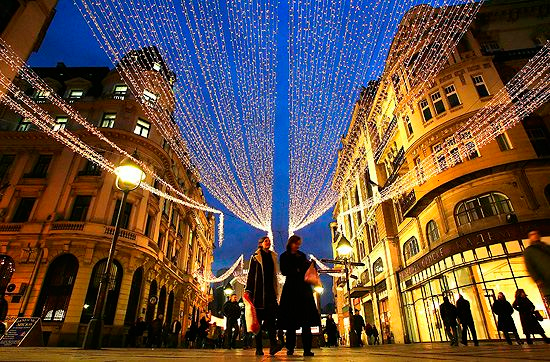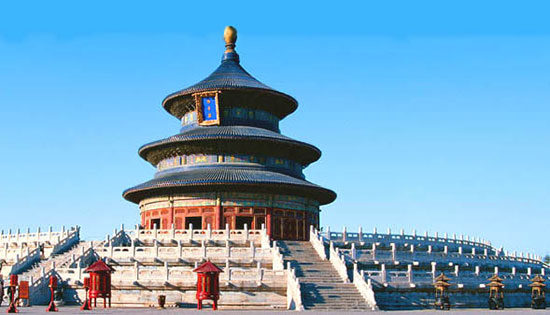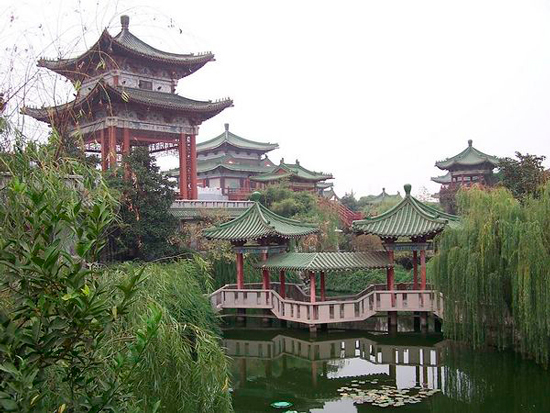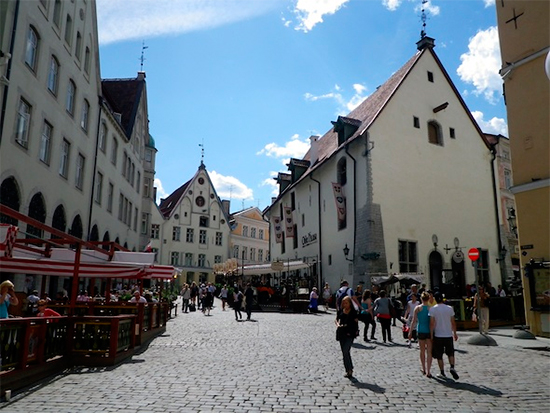End Google Tag Manager -->
Home › Archivos por

Mónica Boixeda
Since the end of the devastating war that destroyed the old Yugoslavia in the 1990s, Belgrade has been regaining its previous magnetism as a favourite tourist destination and there are more and more tourists who decide to visit it in recent times along with its neighbouring Croatia, Slovenia, Bosnia and Herzegovina and Montenegro. Among them there are many young people who have many reasons to choose the Serbian capital as their holiday destination. However, it´s one of the most important cities of the ancient Danubian civilization, and both its privileged geographical location, right in front of the confluence of the rivers Danube and Sava, and its long, rich and multicultural history are more than enough reasons to justify more than one visit here. Often, travellers inevitably feel called upon to the city by memorable places such as the Cathedral of St Sava, the Genex Tower, Knez Mihailova Street, St Mark´s Church, the bohemian district of Skadarlija, the Serbian Accademy for Arts and Sciences, the National Museum or the Bajrakli Mosque. However, among them there is another activity that´s become more and more popular thanks to the word of mouth, an activity that´s as incomprehensible as it is changing and polyedric: a tram route. More specifically, the circular route of the Number 2 tram line of the city´s public tram system, popularly known as ´Riding the circle´. It´s a circle that starts and ends in the beautiful and evocative dock of Pristanište, tracing a circle around the heart of the city, as imaginary clock hands tick around its sphere all the way around, reaching the total of 60 minutes which is...

Mónica Boixeda
China is definitely a very exciting place to visit, it is a place that you have to visit before you die. However our trip could be challenging because of the language barrier. So, with the firm intention of helping you to overcome this difficulty, we have written this article. If your biggest concern when arriving in Beijing is to make yourself understood, there is nothing to worry, on one hand, Chinese people are very expressive and usually work hard to understand the foreign tourists. Moreover, many people speak English in Beijing. Are you still worried? We´ve compiled a list of useful expressions in Chinese (Mandarin) for you to be able to understand and make yourself understood, while you are traveling in Beijing. Ready? Take notes! *Just one more thing: the accents on some vowels are tones, but don’t worry, I´ll take care of this with an indication between brackets, so you know if the vowel is pronounced longer or shorter. Yī [y-i] – One Er [Ahr] – Two Shí [Sh-r] – Ten Er shí [Ahr-sh]– Twenty Yì bǎ [y-i paaa]– One Hundred Qing [ching]: Please Nǐ Hǎo [niiii jaaau]– Hi (The “j” is pronounced as “h” in English) Nǐ Hǎo ma? [niiii jaaau ma?] – How are you? Xiè xiè [sié sié] – Thank you Wǒ jiǎo ___ [wooo jiaaao ___] – I’m ____ Nì na? [niná?] – and you? Bù [Pu] – No Duì bù qǐ [Tuy puchí] – I’m sorry/ excuse me Zài jiàn [Tsái jién]– Goodbye Wǒ yào/ Wǒ bù yào [wooo yáu/ wooo pu yáu] – I want /I don’t want Wǒ zhī dào...

Lidia M
The neighborhood of Jaffa has a very ancient history, about 5000 years of antiquity to be exact. In ancient times it was one of the most important ports in the Mediterranean, it was even spoken of in the Old Testament as to this the port cedar of Lebanon to build the Temple of Solomon arrived(for this reason, the cedar of Lebanon is also called Solomon cedar). The city of Tel Aviv was born around this ancient maritime core, but it was in 1954 when Jaffa became part of the municipality of Tel Aviv, so now both cities are known by the name of Tel Aviv-Yafo. Today, the neighborhood of the Old City of Jaffa is fully integrated into the urban fabric of Tel Aviv, while still maintaining the charm belonging to ancient times and the reflection of its ancient history. Today this neighborhoods nightlife is endless, including restaurants, bars, beach bars and clubs, this area has become the most frequented one by tourists visiting the city. Here you will find the largest flea market in the city, the Jaffa Flea Market, also known as Shuk Hapishpeshim. The main street of this market is Olei Zion and to leave here empty-handed is practically impossible. There´s something for every taste: typewriters used cars, shoes, toys, videos, furniture, etc. etc. The Shuk Hapishpeshim is open Sunday through Friday from 8:00 am to 19:00 pm, Friday being a more chaotic day Art lovers will appreciate another market: Banyamin Nahalat street, which is open every Thursday and Friday throughout the year, from 10:00 h to 17:00 h. Here the works of about 200 artists...

Mónica Boixeda
If you have the chance to see the streets of Beijing, it´s not a bad idea to have a few tips on things you can do there. We habe already seen five interesting tips and now is the time for five more, to make our stay in Beijing a unique adventure. Here we go! 6. Emperor Rooftop Bar The Emperor Rooftop bar in Beijing is an amazing place situated in a privileged location, right in front of the gate of the Forbidden City. There we can have a drink whilst enjoying the best views of the city. The cocktails here are original and sophisticated, and the feeling that you get from up there will not be one you will forget anytime soon. 7. Jingshan Park Spending part of the morning in this park in Beijing is a great idea. Jingshan Park, which means coal hill park, is a lively park with plenty going on. It´s located right behind the Forbidden City and there we can feel like another element of nature, in between many trees and flowers. Like its name indicates, it´s a hill (one of the few we can find in Beijing), so we can make the most of it and enjoy the great views that it offers of the palace. 8. Nanluoguxiang One of the most typical attractions for tourists is shopping, so if we want to go shopping in a nice area full of shops, we need to drop by the hutong (narrow street typical of Beijing) Nanluoguxiang, in the Gulou district. There we can find many shops, cafes, shopping galleries, etc. Everything that you need...

Mónica Boixeda
Visiting a spa and enjoying a sauna is always much more rewarding in a place where it is cold. That´s why It was in the northern European countries where these facilities were used for the first time. Over time, spas have been modernized and its facilities have been adapted to the needs of contemporary society, but there are some that have undergone renovations and have managed to maintain the look and charm that characterized them and granted them such popularity. The best of those old health spas are in the Estonian capital of Tallinn and the oldest is called Kalma Saun. Kalma Saun was the first public spa built in the city, opening its doors in 1928. If you are looking for a state of the art spa ¡perhaps it would be appropriate to find another because ¡Kalma Saun offers an authentic Estonian experience. Here you can enjoy body treatments with heat, hot stones, cold baths, saunas and hot and warm in the old-fashioned way: sitting naked sitting on benches with other customers. But fear not. If you get a little shy enjoy the sauna in a towel, you even have private saunas you can use. There is also a pool where you can swim and cool off after the hot sauna. The building itself speaks volumes about the place. Its facade seems more of a Soviet official Institution than a building of a spa, but the interior is much more comforting, which is an indicator of a genuine Baltic sauna. At reception you will receive a towel, a plastic mat and a birch branch to gently whip yourself...







 English
English Français
Français Deutsch
Deutsch Italiano
Italiano Español
Español